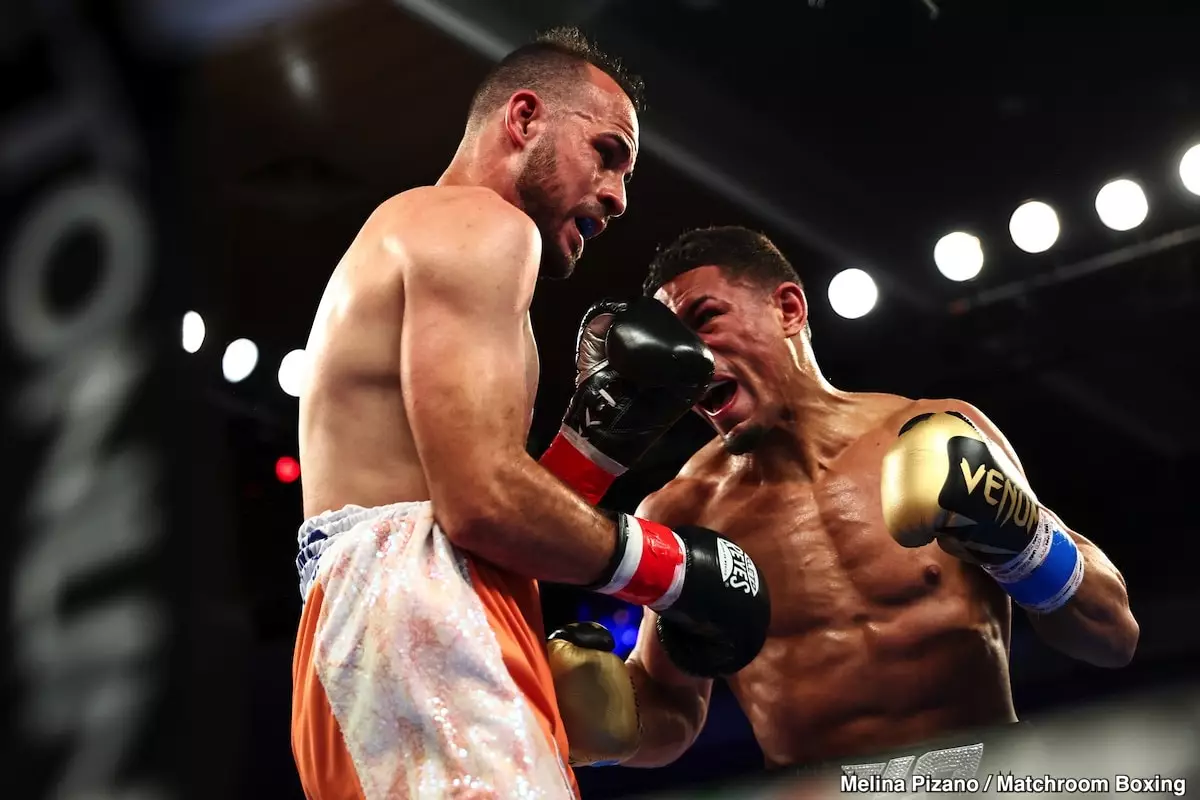On a lively Saturday night at the Caribe Royale in Orlando, Florida, boxing fans witnessed a compelling showdown between former world title challenger Jamaine Ortiz and Yomar Alamo. Despite a rocky start, Ortiz demonstrated his resilience and tactical acumen to secure a ten-round unanimous decision victory, with the judges scoring the contest 99-91, 99-91, and 98-92. At 28 years old, Ortiz, known as ‘The Technician,’ faced Alamo, who came into the fight boasting a record of 22 wins – 13 by knockout.
The first round proved to be a harsh initiation for Ortiz. He found himself absorbing powerful left hooks that left his right eye swollen and raised concerns among fans and analysts alike. However, this early adversity would become the catalyst for Ortiz’s subsequent success, as he quickly recalibrated his approach to take control of the bout.
Strategic Evolution
After weathering the initial onslaught, Ortiz made a pivotal adjustment by taking the fight to Alamo. He leaned on his physical attributes—speed, size, and combination punching—to engage Alamo effectively at close range. The shift in strategy was smart and assertive, as Ortiz began pressing forward, limiting Alamo’s ability to counter effectively. Instead of allowing the Puerto Rican fighter to dictate the pace, Ortiz became the aggressor, utilizing sharp, short combinations that had Alamo pinned against the ropes for extended periods of time.
This change not only showcased Ortiz’s adaptability but also placed him in a commanding position as the fight unfolded. During rounds two through five, it became increasingly evident that Ortiz had outclassed Alamo in nearly every exchange. The contrast in styles was stark; while Alamo possessed technique and power, often relying on single hard shots, Ortiz’s multifaceted combinations and ring IQ outmatched him significantly.
The Dichotomy of Styles
Alamo’s struggle in adapting to Ortiz’s rhythm is particularly noteworthy. Although he began showing promise with effective counters when moving forward, his inability to maintain this approach created vulnerabilities. Ortiz’s tactical versatility effectively neutralized Alamo’s initial successes. Instead of capitalizing on his own advantages, Alamo found himself relegated to a defensive stance, which allowed Ortiz to assume full command of the narrative within the ring.
Despite Ortiz’s success, there lingered a sentiment of ‘what could have been.’ Notably, some analysts, including former champ Sergio Mora, pointed out that while Ortiz delivered a solid performance, he did not make a definitive statement by securing a stoppage against Alamo—who had only been stopped once in his prior 26 bouts. This commentary raises interesting questions about the expectations placed upon fighters in pivotal moments and how victories resonate with fans and officials.
The Road Ahead
Moving forward, Ortiz remains an intriguing figure in the light welterweight division. With a record now standing at 19 wins, 2 losses, and 1 draw, he eyeing a renewed shot at the title. His ambition to face the top contenders in the 140-pound landscape is evident as he expressed his readiness for another title opportunity in recent statements. His recent win, albeit not flawless, indicates that Ortiz possesses the grit and skill necessary to contend with elite adversaries.
However, one cannot overlook the peculiar decision by sanctioning bodies to demote Ortiz in their rankings following his controversial loss to Teofimo Lopez last year. It raises eyebrows, especially in a sport where fighters often remain in the spotlight following close contests. Currently holding positions of #14 in the IBF and #15 in the WBA rankings, Ortiz’s path forward must be navigated with a focus on earning not just victories, but resounding ones that silence critics and validate his aspirations.
Character and Evolution
In reflecting upon Ortiz’s performance against Alamo, it is clear that his ability to evolve in real-time during a fight sets him apart from many in his weight class. His flashes of brilliance, the integration of body shots, and his adaptability to switch between stances are his trademarks. While critics may call for more decisive finishes, previous encounters have proven that Ortiz is a fighter who learns, grows, and often emerges from setbacks with newfound wisdom.
The boxing community is watching closely; Ortiz’s trajectory in the coming months could not only redefine his personal legacy but also impact the broader narrative of the light welterweight division. With hearts and eyes focused on his journey, Ortiz’s next steps will be critical in affirming his status as a champion-caliber fighter.


Leave a Reply